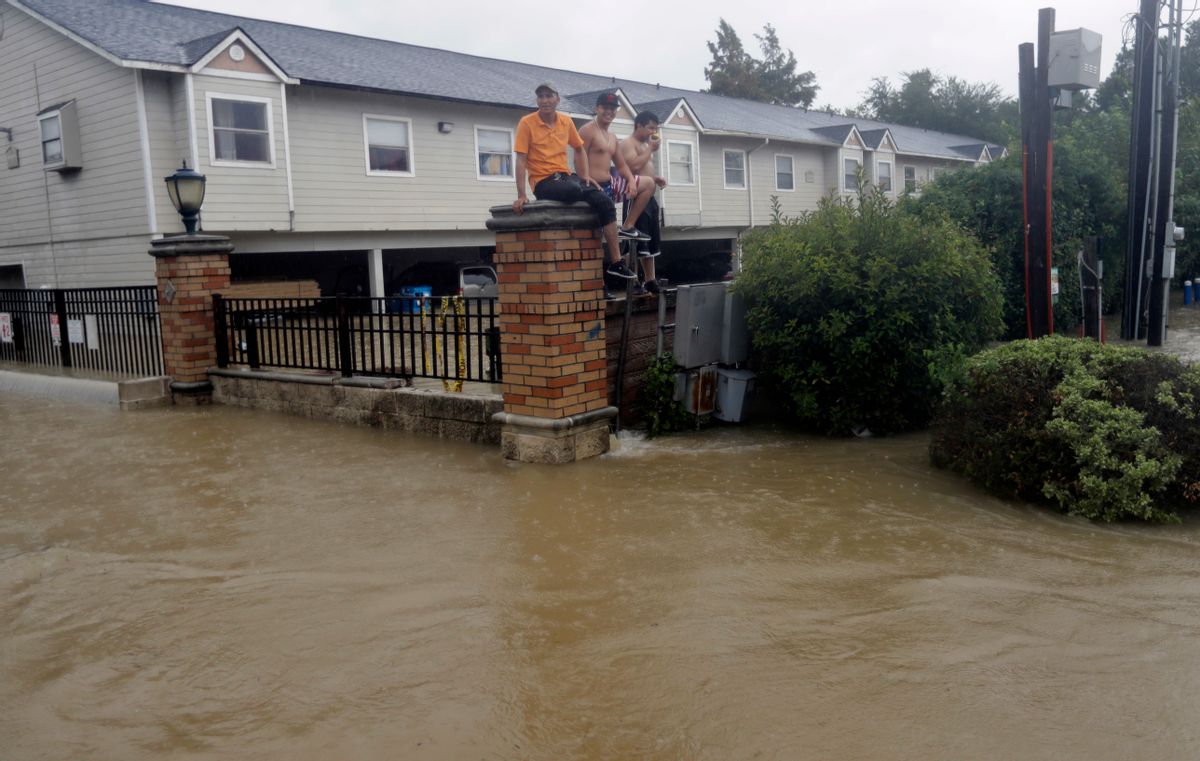Floodwaters in two Houston-area neighborhoods hit hard by Hurricane Harvey have been contaminated with bacteria and toxins — and the highest levels of contamination were found in a low-income neighborhood built next to a slow-moving river that is known to have been polluted for decades.
A New York Times investigation discovered E. coli levels at four times the amount considered safe in "water flowing down Briarhills Parkway in the Houston Energy Corridor."
"There’s pretty clearly sewage contamination, and it’s more concentrated inside the home than outside the home," Lauren Stadler, an assistant professor of civil and environmental engineering at Rice University who participated in the Times’ research said. "It suggests to me that conditions inside the home are more ideal for bacteria to grow and concentrate. It’s warmer and the water has stagnated for days and days. I know some kids were playing in the floodwater outside those places. That’s concerning to me."
Though the Environmental Protection Agency and the Texas Commission on Environmental Quality have risen concerns about contaminated floodwaters, none of the results of samples they have taken have been made public so far, the Times reported.
The Times elaborated on medical warnings:
Dr. Beau Briese, an emergency room physician at Houston Methodist Hospital, said he had seen a doubling in the number of cases of cellulitis — reddened skin infections — since the storm. He said it was a more modest increase than he had expected, and that the infections had been successfully treated with antibiotics.
Dr. David Persse, the chief medical officer of Houston, said residents caring for children, the elderly and those with immune disorders should try to keep them out of homes until they have been cleaned.
In the Clayton Homes public housing development, which is alongside the Buffalo Bayou, levels of E. coli were measured at a shocking 135 times higher than what's considered safe, the Times reported. The water also included elevated levels of "lead, arsenic and other heavy metals in sediment from the floodwaters in the kitchen."
The Buffalo Bayou has been polluted for years, and it's been reported that minority residents have suffered the most from the consequences.
"Here it’s normal to see industrial flares from front porches, and to wake up to paint particles from the nearby scrap metal shredding facility floating into homes," Houston Public Media reported regarding neighborhoods along the bayou.
"I wanted you to come through here because you’re going to see one of the shredding facilities that shreds cars into tiny tiny little pieces of metal. It comes into this community here, and they don’t like it," said Juan Parras, a community activist who led TEJAS, or Texas Environmental Justice Advocacy Services, in 2011.
Parras said the facility should have never been built. The Ashby high rise was heavily protested in the more affluent parts of town, Houston Public Media reported.
"And there was a lot of complaints, you know, the citizens obviously didn’t want it. And at the same time they were building this," Parras said. "And sometimes it gets real real high, you know, just a pile of cars here. And so we call it our Ashby high rise. But even though we protested, you know, we got it anyway."
In 2012, environmentalists called for strengthening the Clean Water Act, which helps regulate pollution control, the same law that President Donald Trump's administration has already proposed rolling back.



Shares